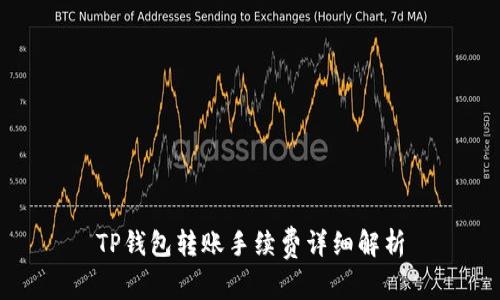TP钱包转账手续费详细解析2025-05-11 18:19:05
引言
在数字货币的使用过程中,钱包的选择和转账的费用是用户非常关心的话题之一。TP钱包作为一个广受欢迎的数字货币钱包,其转账手续费的计算方式和使用方式备受用户关注。本文将对TP钱包的转账手续费进行详细的解析,帮助用户更好地理解手续费的计算方法与影响因素。
TP钱包概述

TP钱包是一款支持多种数字货币的移动钱包,用户可以在其中进行数字资产的存储、转账、交易等操作。由于其界面友好、支持多链功能,TP钱包吸引了大量用户。在进行转账时,手续费是每位用户不可避免要面对的问题。
转账手续费的定义与意义
转账手续费是指在进行数字资产转账时,用户为完成这笔交易而需要支付的费用。手续费不但用于激励网络的正常运行,还反映了网络的拥堵程度。在区块链网络中,交易的确认需要矿工通过“挖矿”来完成,而矿工通常会根据用户支付的手续费来决定优先处理哪些交易。
TP钱包的转账手续费结构

TP钱包的转账手续费通常由两个部分组成:基础手续费和网络手续费。基础手续费是平台为保障服务而收取的固定费用,而网络手续费则是矿工处理交易时收取的费用。不同的网络和数字货币,手续费的计算方式也有所不同,用户在使用TP钱包转账时,需要关注这些细节。
如何计算TP钱包的转账手续费
转账手续费的计算方式主要取决于几个关键因素:转账金额、付款币种以及网络拥堵情况。以太坊网络的手续费是通过“Gas”来表示,而比特币则使用更为简洁的“Satoshis per byte”作为单位。用户可以在TP钱包上查看当前的手续费标准,从而合理设置自己的转账费用。
影响手续费的因素
在TP钱包中,影响转账手续费的因素主要包含以下几方面:
- 交易网络的拥堵程度:网络越拥堵,手续费通常越高。
- 转账金额:某些情况下,高手续费可能与转账金额成正比。
- 转账币种:不同类型的数字货币,其手续费结构和标准也有所不同。
- 用户选择的手续费策略:用户可选择快、慢或中速的手续费策略,而不同的策略对应不同的手续费价值。
用户如何减少转账手续费
对于希望降低手续费的用户,他们可以采取一些策略与技巧。例如,在网络拥堵较小时转账、调整手续费设置、选择合适的转账币种等,都是提升转账性价比的有效方式。同时,用户还应关注市场行情,当手续费较低时,尽量集中转账次数。
总结
在使用TP钱包进行数字资产转账时,用户须了解手续费的计算方式及影响因素,以便做出合理决策。借助上述信息,用户可以更轻松地管理自己的数字资产,同时降低在转账中产生的手续费开支。
常见问题解答
1. TP钱包的手续费是固定的吗?
TP钱包的手续费并不是固定的,手续费会根据网络的拥堵程度和转账币种等因素有所波动。在网络拥堵的高峰期,手续费可能会明显上升,而在网络低谷期,手续费则会相对降低。用户可以通过钱包内的设置来调整手续费的支付策略,从而达到降低支付成本的目的。
2. Transfer fees can significantly affect the trading experience, what measures can TP Wallet users take to mitigate this issue?
To mitigate the impact of transfer fees, TP Wallet users can consider several strategies. First, they can choose to make transfers during off-peak hours when network congestion is low, as fees tend to decrease during these times. Additionally, users can set their transfer fees manually based on current network conditions. By utilizing lower fees, users may experience slower transfer times but can save on costs. Users can access fee tracking and history features based on market trends and adjust their strategies accordingly to optimize their transactions.
3. What happens if I set a too low transaction fee on TP Wallet?
If users set a transaction fee that is too low on TP Wallet, their transaction may take a longer time to be confirmed. In severe cases, it may even remain unprocessed for an extended period or get dropped by the network entirely. Lower transaction fees could lead to transactions being deprioritized by miners, as miners generally choose transactions with higher fees. Users are advised to monitor the recommended fee rates and adjust their transaction fees accordingly to ensure timely processing.
4. Are there any other costs associated with using TP Wallet besides transfer fees?
Yes, besides transfer fees, users of TP Wallet might encounter other costs. Some potential costs include conversion fees when exchanging different cryptocurrencies within the wallet, as well as fees for additional features or services provided by the wallet, such as staking or trading features. Users are encouraged to read the terms of service and fees associated with any specific transactions to better understand any additional costs involved. Transparency in fee structures helps users manage their expenses better when using digital wallets.
5. How is the transaction fee for a specific cryptocurrency calculated in TP Wallet?
In TP Wallet, the transaction fee for a specific cryptocurrency is generally calculated based on several parameters such as network congestion, the size of the transaction (measured in bytes), and the current market conditions. For instance, on networks like Ethereum, the fee is determined by multiplying the gas limit by the gas price. Users should stay informed about the current gas prices within the Ethereum network and any recommended fee adjustments provided within the wallet interface. By understanding how transaction fees function within different networks, users can effectively manage their transfer costs.
综上所述,TP钱包用户在进行数字资产转账时,需充分了解手续费的构成与影响因素,制定合理的转账策略,以降低交易成本。在日常使用中,密切关注手续费动态,有助于提升使用体验。